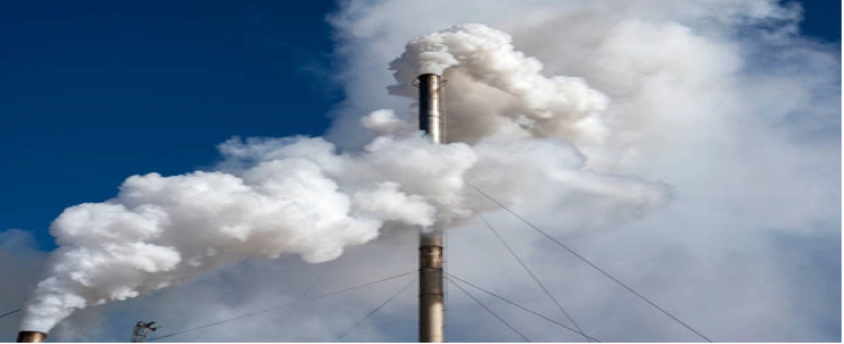Intra-national COP: An innovative approach of cooperation
23, Jan 2023

Prelims level : Environment
Mains level : GS-III Environment & Biodiversity |Climatic Change Conservation, Environmental Pollution & Degradation, Eia
Why in News?
- India revised its target to reduce the carbon intensity of its GDP to 45 percent by 2030, more ambitious than the earlier target of 34 percent. These National carbon emission targets were globally appreciated and have further strengthened its leadership position in climate action.
Spirit of cooperative federalism is needed to achieve this target:
- In order to effectively address climate change, India needs to involve all of its states and Union Territories. During recent climate summits, the states and UTs have not been active participants.
- A new approach to cooperation between states and UTs on climate action is needed, similar to the cooperation used in the implementation of the Goods and Services Tax (GST). This will lead to better results in public sector actions to tackle climate change.
Role of states:
- Power of States and UTs: Provisions in the Constitution of India, legislations of the Parliament, executive orders, and judicial decisions enable states/UTs to have a substantial influence on matters pertaining to land, electricity, mobility, labour, pollution control, skill building, law and order, financial incentives for commercial activities, etc.
- Role of States and UTs in Policy Implementation: States/UTs can become prime movers in the last mile through interventions in policy, regulation, and project implementation.
- Potential of India’s Cooperative Federalism: During the ongoing winter session of Parliament, the Prime Minister of India also emphasised the potential of India’s cooperative federalism in becoming ‘a torch bearer of the world’ in achieving Sustainable Development Goals (SDGs) while addressing its Rajya Sabha.
How India’s model of ‘Intranational COP’ will work?
- Utilizing GST council model for climate action: Climate action is a unifying theme, and creating a forum similar to the Goods and Services Taxes (GST) council, which created successful engagement models during the pan-India roll-out of GST, can be helpful.
- Facilitating cross-party dialogue: This intra-country group, Intranational COP, can offer opportunities for sharing a stage across parties in a neutral setting where outcome-oriented conversations can take place.
- Promoting cooperative and competitive federalism for Net Zero: It can kindle the friendly spirit of cooperative and competitive federalism with each state/UT committing to bolder actions towards net zero.
- Measuring stakeholder performance through consensus building: It can potentially introduce new evaluation parameters for measuring the performance of stakeholders based on their ability to build consensus across boundaries while keeping aside their myopic and constricted vote-bank-centered politics.
- Learning and Leveraging Best Practices: Climate change is a new and dynamic topic for all stakeholders. It is an equaliser where no state/UT has any inherent advantageous positions. States/UTs can learn best practices from each other to implement, achieve, and measure the outcomes of their actions.
Electricity distribution: A case of cooperation:
- Today, though a project is conceived, financed, and implemented by central agencies, site-specific mobilisation of resources requires the active cooperation of the states/UTs.
- An important case in point can be electricity distribution, where states can exponentially augment India’s clean energy ambitions.
- Furthermore, they can directly support municipal corporations/village panchayats in innovating customised approaches for faster and inclusive adoption of national climate goals in line with the socioeconomic and cultural sensitivities of the region.
‘Intranational COP’ for common but differentiated responsibilities
- Forum for addressing Climate Change within India: It is well-established that some parts of India are economically more developed as compared to others. This translates to the fact that the relatively more prosperous regions contribute more to India’s carbon emissions. Such states are better positioned to initially invest in expensive low-carbon technologies and disseminate them to achieve economies of scale.
- Addressing Regional Imbalances in Carbon Emissions: IndiaCOP can unleash creative mechanisms to offset regional imbalances while respecting local cultural sensitivities.
- Platform for States/UTs to Forge Mutual Cooperation Agreements: It can provide a platform for states/UTs to forge MOUs that complement each other’s strengths while filling up the gaps in technical/financial/people resources. For e.g., small hilly states have good hydroelectric power potential, but they may lack financial wherewithal; states like Rajasthan have good solar energy potential but currently lack sufficient trained manpower, etc.
Way ahead:
- Intranational COP can be a dedicated flagship platform to thrash out a national consensus on India’s climate goals and the means to achieve them. For example, the Finance Commission can play a role in allocating capital based on the climate actions and needs of states.
- The mechanisms of climate funding and allocation, led by the Finance Commission, can be debated and agreed upon on this platform. Such a consensus will enjoy double legitimacy as it is arrived at collectively by the union and state/UT governments.
Conclusion:
- The success of India’s model of “Intra-national COP” can become a template for federal nations across the world to engage with provincial/local governments with diverse socio-political and economic challenges. It can score a big win in promoting India’s soft power, especially as it takes on the presidency of the G20.






